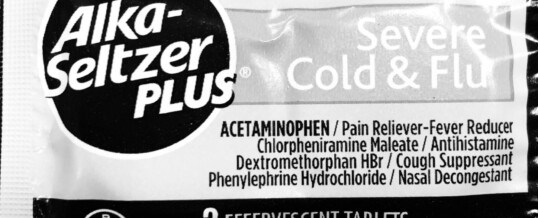
Commercials used to be great. They used to be an art form. They used to be fun. Today’s advertising is boring in comparison.
Television commercials were something to which I looked forward when I was a kid. Some were better developed and more interesting than the shows they sponsored.
Each advertisement succeeded by identifying a problem and offering a solution.
There were a few misters: Mr. Clean. Mr. Whipple. Mr. Bubble. And Mr. Peanut.
Mr. Clean would show up in someone’s home and highlight how dirty it was. He then offered to show the lady of the house how easy he could make the cleaning process.
I was always a little afraid of Mr. Clean. And I questioned his motives.
A burly fellow, Mr. Clean looked as if he might pummel you if you didn’t use his product. He’s muscular; has a slick, shaved head; and a tight, white T-shirt.
The moms in the ads always seemed a little too pleased that he stopped by.
On the other hand, Mr. Whipple was about as non threatening as a TV pitchman could get. He worked in a grocery store and sold toilet paper.
“Please don’t squeeze the Charmin,” Mr. Whipple shouted at the women in the store who were caught mashing rolls of toilet paper between their fingers.
Mr. Whipple didn’t make the women swoon. He seemed more like the kind of guy who got beat up daily back when he was in junior high gym class.
My sister and I didn’t know you could take a bath without bubbles until we were much older. Our mom kept a box of Mr. Bubble on the corner of our bathtub, where the two walls met.
In our world, no bath was complete without a bar of Ivory Soap, a glass bottle of Pearl Shampoo, and a box of Mr. Bubble.
You’d pour a bit of Mr. Bubble powder into the tub as it was filling, and a sea of bubbles would form. Later, they sold Mr. Bubble in a liquid, but the powder was what my sister and I liked.
Mr. Peanut was the mascot for Planters. A nut with legs, arms, a top hat, and a monocle, Mr. Peanut was likable, even if no one seemed to notice that he was encouraging folks to eat his own species.
Of course, after all of that snacking, we needed to practice a little oral hygiene. Something that wasn’t done with any regularity until around the time of World War I.
When the US Government started drafting men to fight in WWI, it seems that rotten teeth were a big problem. A problem brought on due to an increased consumption of sugar.
Sugar, but no teeth brushing.
The new medium of radio was ripe for all types of product advertising, and toothpaste became a big sponsor of many programs.
Particularly Ipana Toothpaste. A toothpaste brand that would stay popular all through my early childhood.
Bucky Beaver told us to, “Brusha, brusha, brusha. Get the New Ipana—it’s dandy for your teeth!” Bucky was a cartoon character designed by Walt Disney Studios.
And, “You’ll wonder where the yellow went when you use Pepsodent!” Calvin and the Colonel were the cartoon mascots for Pepsodent.
They were everything that was great about America back then. They chain smoked and sold kids on the idea of using toothpaste.
If dinner had given our parents indigestion, we had Speedy Alka-Seltzer there to sing, “Plop, Plop, fizz, fizz, oh, what a relief it is!”
Speedy had an early 60s animation vibe, and a body and hat made of Alka-Seltzer tablets. Later, Speedy was retired for a series of adults who lamented their consumption of large quantities of spicy or heavy foods.
“I can’t believe I ate the whole thing,” the man said as he sat on the side of his bed in his pajamas.
“You ate it, Ralph,” his wife said from the other side of the bed.
His wife may not have felt sorry for him, but the viewer did. And we were glad that by the end of the ad, the Alka-Seltzer had done its job. Once again allowing an irresponsible adult to overeat and then get away with it.
And then there was the Alka-Seltzer commercial-within-a-commercial, where the man was filming a fake ad about a spaghetti sauce. He had to do multiple takes, causing indigestion.
“Momma mia, that’s a spicy meatball!”
By the tenth or eleventh take, it was Alka-Seltzer to the rescue.
Whether it was Mr. Bubbles, Bucky Beaver, or Speedy Alka-Seltzer, advertising made our formative years pretty great.
Maybe the ad agencies of today could dig through the archives and learn a thing or two about how to make today’s advertising better.
Now that we’ve identified the problem and offered a solution.
©2024 John Moore
John’s books, Puns for Groan People and Write of Passage: A Southerner’s View of Then and Now Vol. 1 and Vol. 2, are available on his website TheCountryWriter.com, where you can also send him a message.
JAN
2024
